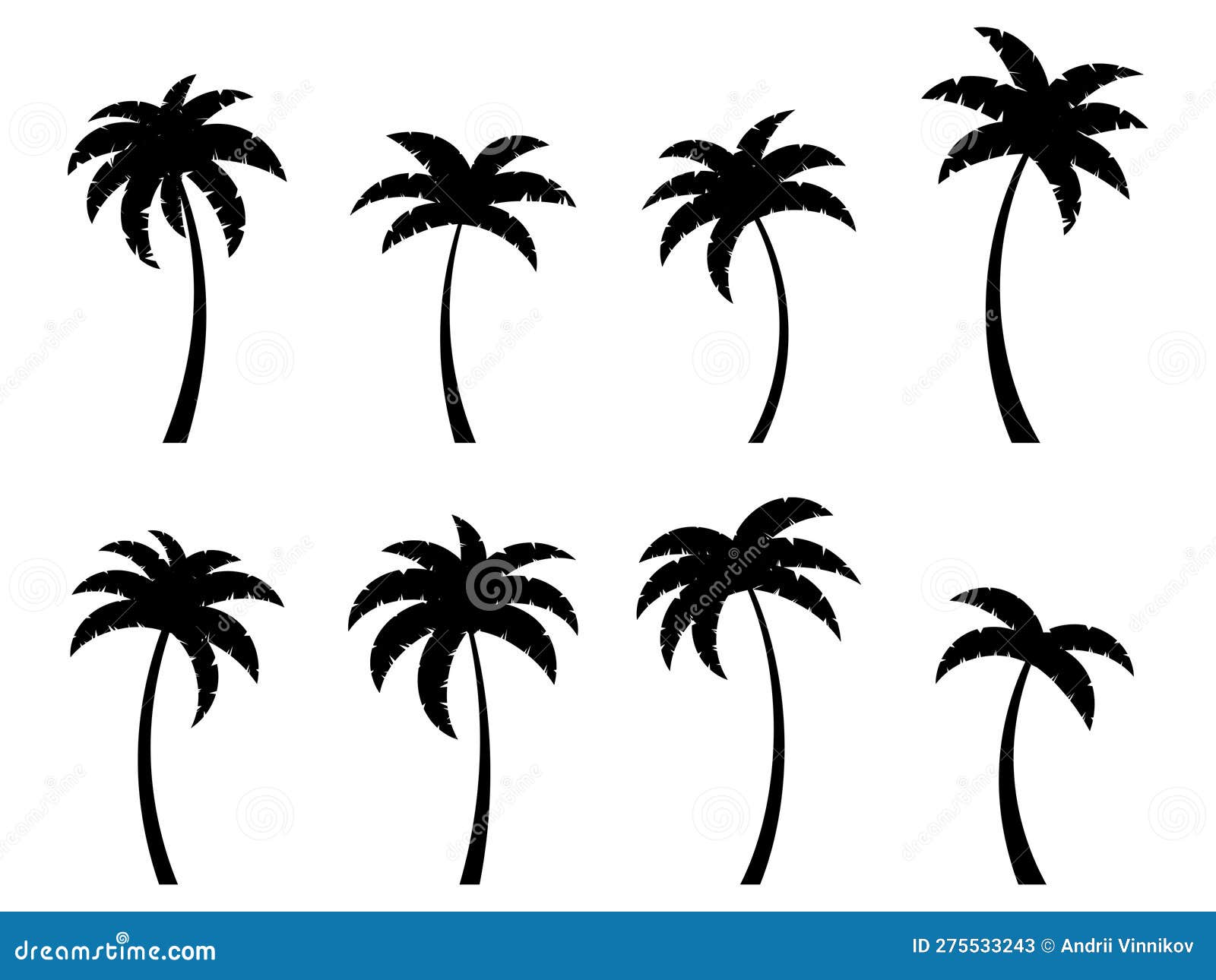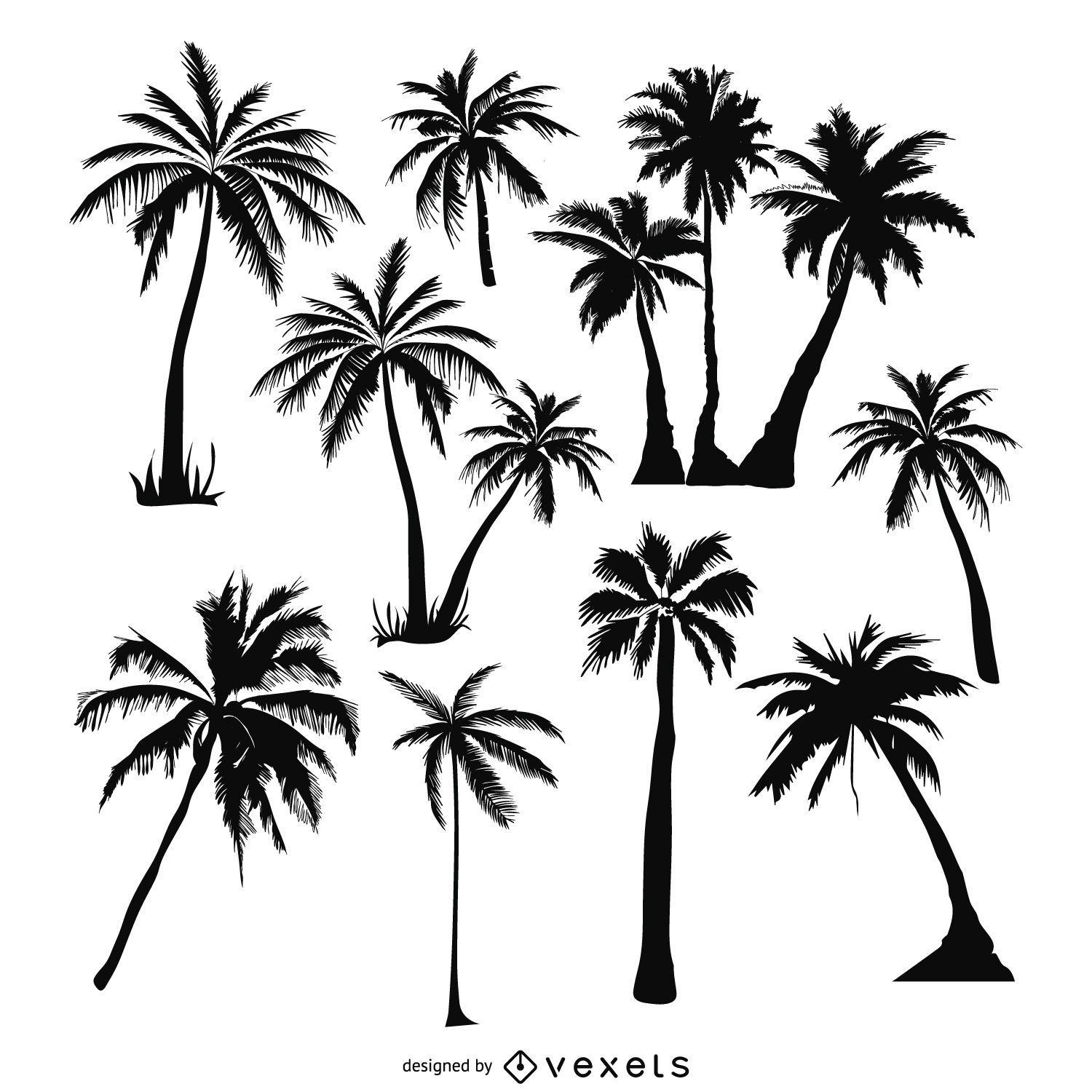In recent years, palm tree vectors have emerged as pivotal elements in environmental campaigns, serving as symbols of sustainability and biodiversity. These plants not only signify tropical beauty but also play essential roles in their ecosystems. By examining their significance and contributions, we can appreciate how they enhance environmental awareness and promote sustainable practices.
Understanding Palm Tree Vectors and Their Importance

Palm tree vectors are not just ornamental; they are integral to various ecosystems. These trees, belonging to the family Arecaceae, are found in diverse environments, ranging from tropical rainforests to subtropical regions. Their importance in ecological terms is multifaceted:
- Biodiversity Support: Palm trees provide habitats for numerous species, including birds, insects, and mammals. They foster biodiversity, which is essential for resilient ecosystems.
- Soil Conservation: The extensive root systems of palm trees help stabilize soil, preventing erosion and promoting nutrient recycling within the environment.
- Carbon Sequestration: Palm trees play a crucial role in carbon capture. By absorbing carbon dioxide, they mitigate the impacts of climate change and enhance air quality.
- Cultural Significance: In many cultures, palms symbolize life and prosperity. Their inclusion in environmental campaigns can resonate emotionally with communities, fostering a deeper connection to conservation efforts.
How Palm Trees Contribute to Environmental Sustainability

Palm trees offer numerous ecological benefits that support environmental sustainability. Their contributions extend beyond just aesthetic appeal:
- Renewable Resources: Palm products, such as coconut and palm oil, can be harvested sustainably, minimizing environmental impact and supporting local economies.
- Shade and Cooling: These trees provide shade and cooling effects in urban areas, reducing the urban heat island effect and lowering energy consumption.
- Water Cycle Regulation: Palm trees play a vital role in the water cycle. They help maintain groundwater levels and assist in rainwater absorption, crucial for healthy ecosystems.
Thus, palm trees act as critical vectors in environmental campaigns, emphasizing the interconnectedness of nature and the need for sustainable practices.
Utilizing Palm Tree Vectors in Visual Campaigns

When it comes to designing impactful visual campaigns, palm tree vectors can serve as powerful symbols. Palm trees evoke feelings of tranquility, tropical paradises, and natural beauty—elements that resonate deeply with audiences. But how exactly can they be utilized effectively?
Here are some strategies for incorporating palm tree vectors into your visual campaigns:
- Symbolism: Use palm trees to represent sustainability, growth, and eco-friendliness. They can set the scene for messages around conservation and environmental responsibility.
- Color Palette: Choose colors that complement the palm tree imagery. Greens, blues, and earthy tones can enhance the overall aesthetic and strengthen the message of your campaign.
- Brand Mood: Palm trees can help shape the mood of your campaign. Think of inviting designs that encourage viewers to associate your message with relaxation and enjoyment in nature.
- Social Media Graphics: Utilize palm tree vectors in your social media posts to catch the eye and attract engagement. Bright, tropical images are more likely to be shared and remembered.
- Infographics: Incorporate palm trees into infographics to visually demonstrate the importance of environmental issues related to tropical ecosystems.
By creatively employing palm tree vectors, you can not only beautify your campaign but also make it more relatable and impactful. The goal is to forge a connection between the audience and the environmental cause, and palm trees can be the bridge that unites them.
Case Studies of Successful Environmental Campaigns Using Palm Trees

To understand the effectiveness of palm tree vectors in environmental campaigns, let’s look at some noteworthy examples. These case studies showcase how strategic design with palm trees can elevate a message while inspiring action.
1. Save Our Shores Campaign
This campaign focused on protecting coastal ecosystems heavily influenced by palm tree imagery. Using lush visuals of palm-fringed beaches, they effectively communicated the importance of preserving ocean habitats. Social media posts featuring palm trees led to a 40% increase in engagement and donations.
2. Green Tropical Initiative
This initiative aimed to promote reforestation in tropical areas. Their use of palm vector graphics in brochures and online content highlighted the relationship between these trees and local wildlife. As a result, they successfully garnered support from schools and communities, leading to the planting of over 5,000 palm seedlings.
3. Palm for the Planet
This global awareness campaign creatively used palm tree vectors in their merchandise and branding to raise funds for environmental projects. They implemented a catchy slogan, “Plant a Palm, Save the Planet,” and their eye-catching designs helped drive a movement that gained widespread participation and funding.
These case studies illustrate that the integration of palm tree vectors isn’t just visually appealing; it can also significantly enhance the effectiveness of environmental campaigns. Whether it’s through raising awareness, encouraging community participation, or driving donations, palm trees hold a unique position in these narratives.
Design Tips for Effective Palm Tree Vector Graphics
Creating standout palm tree vector graphics can really elevate your environmental campaigns. Here are some key design tips to ensure your visuals have maximum impact:
- Keep it Simple: A clutter-free design is more memorable. Aim for clean lines and minimalistic elements that highlight the palm tree without overwhelming the viewer.
- Use Vibrant Colors: Palm trees evoke thoughts of tropical locales and sunny beaches. Utilize a color palette that includes greens, yellows, and blues to embody that vibrant feel, harnessing the power of color psychology.
- Incorporate Texture: Adding texture to your graphics can add depth and interest. Consider using grainy textures or gradients to give your palm trees a more lifelike appearance.
- Play with Perspectives: Experiment with different angles and sizes. A palm tree seen from below can convey grandeur, while a top-down view gives a unique landscape perspective.
- Use Contextual Elements: Surround your palm trees with elements that reflect your campaign’s theme—perhaps incorporating wildlife or oceanic elements that reinforce the message of environmental preservation.
- Versatility is Key: Design your graphics to be adaptable for various platforms, from social media posts to brochures. Make sure they retain clarity and impact across different sizes and formats.
By using these tips, your palm tree vector graphics can effectively communicate your message and resonate with your audience.
Engaging the Community with Palm Tree-Themed Initiatives
Bringing the community together through palm tree-themed initiatives can make a significant difference in promoting environmental awareness and action. Here are some engaging ideas to consider:
- Palm Tree Planting Days: Organize community tree planting events focused on palm trees native to your region. Gather locals, provide seedlings, and promote a hands-on approach to environmental stewardship.
- Art Competitions: Host an art competition encouraging participants to create palm tree-themed art. This could include painting, photography, or digital art, which can then be displayed in local galleries or online.
- Educational Workshops: Offer workshops that educate the community about the ecological importance of palm trees, their role in biodiversity, and how they can contribute to preserving local ecosystems.
- Social Media Campaigns: Launch a social media campaign encouraging locals to share photos of their favorite palm trees with specific hashtags. This can create a sense of community and inspire pride in local greenery.
- Collaborative Clean-Up Events: Pair palm tree-themed community clean-up events with environmental education. While keeping the area clean, share fun facts about local palm trees and their importance to the landscape.
By implementing these ideas, you not only engage the community but also foster a deeper appreciation for palm trees and their vital role in our environment.
Challenges in Using Palm Tree Vectors for Environmental Messaging
While palm tree vectors serve as powerful symbols in environmental campaigns, their use also comes with a unique set of challenges. Here are some of the main obstacles that communicators face:
- Misinterpretation: Not everyone associates palm trees with positive environmental practices. In some regions, they might be seen as indicators of deforestation or commercialization. This can lead to mixed messages and confusion in campaigns.
- Over-saturation: With palm trees being widely used in various campaigns, they risk becoming clichés. This overuse can diminish their impact, making it harder for messages to stand out in a crowded space.
- Cultural Sensitivity: Palm trees hold different meanings across cultures. It’s essential to ensure that their representation is respectful and accurate to avoid offending local communities.
- Environmental Context: Simply using a palm tree vector does not address the complexities of environmental issues. In some areas, palm cultivation has led to negative environmental impacts, such as habitat destruction and loss of biodiversity.
- Resource Allocation: Organizations may struggle with allocating resources effectively to create high-quality, impactful visuals that resonate with their audience without overspending.
To navigate these challenges, it’s crucial for campaign designers to conduct thorough audience research, focus on localized messaging, and ensure that their use of palm tree vectors is both meaningful and contextually appropriate.
The Future of Palm Tree Vectors in Environmental Awareness
The future of palm tree vectors in environmental awareness looks promising, especially as awareness about environmental sustainability grows. Palm trees can continue to play a vital role, but they must be used thoughtfully and innovatively. Here are some trends and ideas for their future use:
- Virtual Reality and Augmented Reality Experiences: As technology evolves, integrating palm tree vectors into VR and AR can create immersive experiences that educate users about environmental issues, conservation practices, and the importance of palm ecosystems.
- Interactive Campaigns: Utilizing palm trees in interactive online campaigns could engage audiences more effectively. Gamified content where participants learn about sustainability practices related to palm trees as they progress could be very impactful.
- Sustainable Design: Future designs should focus on sustainability, using the palm tree motif to promote eco-friendly practices. This might include developing materials, packaging, and campaigns inspired by palm trees that are themselves sustainable.
- Collaborative Efforts: Partnerships with local communities and conservation organizations can enhance the authenticity of palm tree messages. Collaborating on conservation projects and showcasing local benefits can strengthen the narratives around palm trees.
By embracing these trends, palm tree vectors can not only rejuvenate their role in environmental campaigns but also foster a deeper connection with audiences, leading to more comprehensive and impactful environmental awareness efforts.
The Role of Palm Tree Vectors in Environmental Campaigns
Palm tree vectors have emerged as an essential tool in promoting environmental campaigns, particularly in regions where these iconic trees are pivotal to local ecosystems and economies. These vectors serve as a bridge between environmental messages and the stakeholders they aim to engage, ensuring that campaigns resonate with the community and emphasize the importance of conservation.
One of the primary functions of palm tree vectors in environmental campaigns includes:
- Educational Outreach: Palm trees symbolize tropical regions and biodiversity, making them effective in raising awareness about the importance of preserving natural habitats.
- Community Engagement: Visual and cultural significance of palm trees can encourage local participation in conservation efforts, fostering a sense of ownership and responsibility.
- Ecological Benefits: Campaigns can highlight the ecological roles that palm trees play, such as improving air quality and supporting wildlife.
- Commercial Value: By promoting sustainable harvesting practices, campaigns can help palm farmers enhance their income while conserving resources.
Moreover, various strategies integrate palm tree vectors effectively:
| Strategy | Description |
|---|---|
| Art and Design | Utilizing palm tree imagery in campaign materials to draw attention and evoke emotional responses. |
| Social Media | Sharing stories and visuals related to palm trees on platforms like Instagram and Facebook to reach wider audiences. |
| Events | Organizing community events focused on palm tree planting and protection, encouraging hands-on participation. |
In conclusion, the impact of palm tree vectors on environmental campaigns is significant, as they not only enhance awareness but also empower communities and promote sustainable practices that benefit both the environment and local economies.


